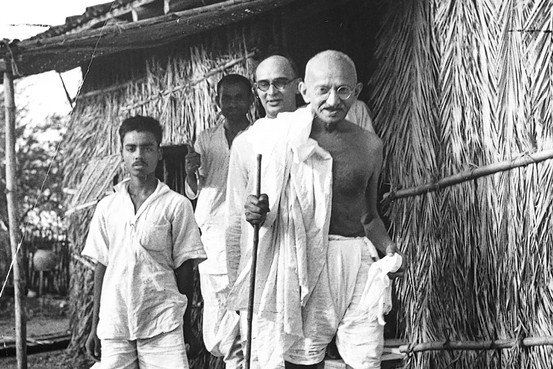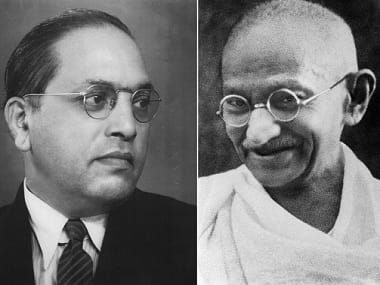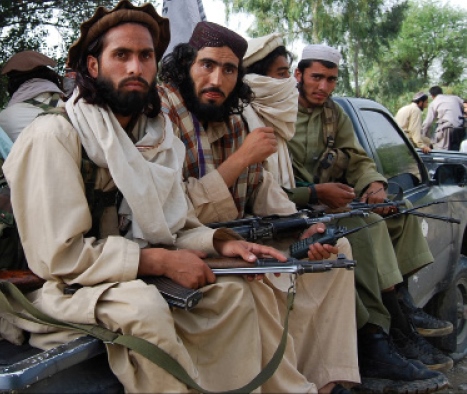CRITICAL INSIGHT
Experience, Politics and Resistance: Revisiting ‘Hind Swaraj’
Three bullets killed the man called Gandhi but they did not diminish the greatness of the ideas that he fought for. As we approach his 69th death anniversary we engage once more with one of his most wellknown texts ‘Hind Swaraj’ and ask whether the insights that he raised have a resonance in our times too as they did when it was written in 1908.
Dr. Ruchira Das teaches at Department of Elementary Education, Institute of Home Economics, University of Delhi, New Delhi.
Dr. Vikas Pathak Works as Deputy Political Editor, The Hindu, New Delhi.
Written in 1908, Hind Swaraj or the Indian Home Rule is considered the most detailed ideological exposition of M K Gandhi, the most influential leader of India’s movement for freedom from British/colonial rule. The book vehemently condemns the modern civilization and initiates a dialogue on the understanding of Swaraj that stands out for the radically different ideas it presents. Hind Swaraj seeks to discuss Gandhian thought, which was perhaps the most powerful counter-hegemonic response to the intrusion of modernity through colonialism. Gandhi, however, had to take into account the altered material context of a pan-Indian space – something evident in his acceptance of the Indian nation. It is also very likely that he, too, could not entirely escape modernist ideas of nationhood. What is commendable, however, is that he imagined the nation in profoundly anti-modern ways. He dismissed mechanized production; urbanization; centralized, modern states with powerful armies; modern medicine; the idea of rule of law, and also parliamentary democracy. He critiqued the modern, secular world-view and assessed civilization values in religious terms.
Hind Swaraj was at one level an answer to the revolutionaries, with whose method of attempting to liberate India Gandhi profoundly disagreed. But at a deeper level, the text is an engagement with what freedom means. It disagrees fundamentally with those for whom the freedom of India meant the transfer of political control from British to Indian hands but retention of all British institutions, from the Parliament to a modern, standing army. According to M K Gandhi by merely replacing the colonial rulers by the Indians Swaraj cannot be attained if the latter continue to be governed by the same principles, with the same objectives, and with a similar commitment to the values of modern civilization. As he puts it, “we want English rule without the Englishman. You want the tiger’s nature, but not the tiger; that is to say, you would make India English. And when it becomes English, it will be called not Hindustan but Englistan. This is not the Swaraj (freedom or self-rule) that I want” (Gandhi, 2010: 24). Western civilization was largely modern, industrial civilization and therefore this seminal work can be read as a critique of the West. But Gandhi equally and unequivocally emphasized on the view that India had been grounded into submission not so much by the British/colonial rulers as by modern civilization. It is the hegemony of the modern world that has rendered India captive. As he wrote, “the English have not taken India; we have given it to them. They are not in India because of their strength, but because we keep them” (Ibid, pp. 31).
The book further addresses a variety of other issues, from a critique of the cow protection movement of Hindu nationalists in India to a critique of almost all British institutions. In the text, Gandhi sometimes comes across as arguing in what would be seen as an “irrational” manner, like when he denounces the Railways as carriers of disease and means of transport by which rogues could reach places of pilgrimage.The question, however, is the deeper politics of the text. What made the text unique and, some would say, necessary in the times it was written in? The answer perhaps lies in the very nature of the modern state itself, as Antonio Gramsci has powerfully brought out. The modern state – the colonial state in India was also certainly a semi-modern state – was built not just on coercion but also on consent, sustained by its hegemonic claims of doing good to the people over whom it held sway. The hegemonic aspect of the colonial state was reflected in the civilizing mission: the claim that the British were in India not to rule it but to uplift it. The English education system, the rule of law, Parliamentary democracy and the Railways were shown as benefits of British rule in India. Gandhi however rejects this claim that many accepted, suggesting not just British rule but modern civilization as the problem.
While Gandhi borrows the Orientalist distinction between a “modern” west and an other-wordly east, he inverts the colonial discourse by seeing the east as superior to the “irreligious”, modern west. In Hind Swaraj, Gandhi upholds religion while mounting an attack against the “western” and “modern” civilization. To quote him, “This civilization takes note neither of morality nor of religion. Its votaries calmly state that their business is not to teach religion. Some even consider it to be a superstitious growth … This civilization is irreligion, and it has taken such a hold on the people in Europe that those who are in it appear to be half mad.” (Gandhi, 2010: 30). He then adds, “this civilization is such that one has only to be patient and it will be self-destroyed. According to the teaching of Mohammed this would be considered a Satanic Civilisation. Hinduism calls it the Black Age… It is eating into the vitals of the English nation. It must be shunned. Parliaments are really emblems of slavery. They (the English) deserve our sympathy… They are enterprising and industrious, and their mode of thought is not inherently immoral. Neither are they bad at heart. I therefore respect them. Civilisation is not an incurable disease, but it should never be forgotten that the English people are at present afflicted by it” (Ibid, p. 30). However, one must remember that Gandhi’s emphasis was not on the theological interference of any particular organized religion in the realm of governance, but on religion as a way of life. “It is my deliberate opinion that India is being ground down, not under the English heel, but under that of modern civilization. It is groaning under the monster’s terrible weight. There is yet time to escape it, but every day makes it more and more difficult. Religion is dear to me and my first complaint is that India is becoming irreligious. Here I am not thinking of the Hindu or the Mahomedan or the Zorostrian religion but of that religion which underlies all religions. We are turning away from God.” (Ibid, p. 33).
Perhaps nationalism was the only aspect of modernity that Gandhi unhesitatingly accepted. But here too, he rejected a centralized nation-state and argued in favour of decentralization with local self-government and “village-republics”. He argues, “We have managed with the same kind of plough as existed thousands of years ago. We have retained the same kind of cottages that we had in former times and our indigenous education remains the same as before. We had no system of life-corroding competition. Each followed his own occupation or trade and charged a regulation wage. It was not that we did not know how to invent machinery, but our forefathers knew that, if we set our hearts after such things, we would… lose our moral fibre. They further reasoned that large cities were a snare and a useless encumbrance and that people would not be happy in them. They were, therefore, satisfied with small villages. They saw that kings and their swords were inferior to the sword of ethics, and they, therefore, held the sovereigns of the earth to be inferior to the Rishis and the Fakirs. This nation had courts, lawyers, and doctors, but they were all within bounds…they were considered people’s dependents, not their masters. The ordinary rule was to avoid courts. There were no touts to lure people into them. This evil, too, was noticeable only in and around capitals. The common people lived independently and followed their agricultural occupation. They enjoyed true Home Rule.” (Gandhi, 2010: 50-51) The above passage indicates that the Gandhian discourse of a civilized society entails a withdrawal of the state. The state retains just a minimal, facilitating role in the proper working of the society, and power is truly in the hands of localized, village communities. The nation survives not through a centralized state structure but through cultural linkages between localized, self-sufficient, village communities.
Thus what Gandhi emphasized for Swaraj was ‘localism’, i.e, creation of local neighbourhood community. It is this commitment of the individual to his ‘desh’, i.e., the local neighbourhood community and expansion of its networks that reflected Gandhi’s idea of Indian alternative to western nationalism. Gandhi perceived that power in India was inevitably monopolised by the urban elite, at the expense of the rural people, and was trying to alter this dependency to make the state serve the weaker sections. Gandhi perceived India as a nation of village republic therefore for Gandhi village was not just a geographic/territorial place or a social class. He used the term ‘village’ that implied not an entity, but a set of values. It brought together his three basic themes of swaraj i.e self-respect, self-realisation and self-reliance. However, one needs to remember that the locality itself is fraught with social hierarchies, on caste, gender and other lines. When Gandhi seeks to limit the modernizing project of the state, the attempt must negotiate the extant hierarchies within the locality and somehow combat them, something Gandhi did try to do in his own ways, with whatever success. While the modern state has its problems, the village is not exactly a socially egalitarian world.
There are problems within the Gandhian discourse in caste and gender terms. To say that people in India followed their own occupation without competition is to tie people to their caste occupations. In other words, the marginalized sections of the society, be it the dalits or the tribes, would continue to engage in their traditional occupations without aspiring for a change in their lives. So far as gender is concerned, Gandhi sees the fact that women, once “queens” of households, have to work within the modern system as a problem. There are also traces of tacit gender bias when he calls the British Parliament a “prostitute” and “sterile” women both for its tendency to change every few years and its inability to bring real change apart from insincere speeches.
It is interesting that in attempting to trace Indian nationalism into a rather hoary past – something common to all nationalist imagination – Gandhi celebrates a past national unity in the absence, and to the rejection, of modern technology, something often associated with the rise of nationalism. He argues in the Hind Swaraj, “We were one nation before they (the British) came to India. One thought inspired us. Our mode of life was the same…It is submitted that our leading men traveled throughout India either on foot or in bullock-carts. They learned one another’s languages and there was no aloofness between them. What do you think could have been the intention of those farseeing ancestors of ours who established Setubandha (Rameshwaram) in the South, Jagannath in the East and Haridwar in the North as places of pilgrimage…. Only you and I and others who consider ourselves civilized and superior imagine that we are many nations. It was after the advent of railways that we began to believe in distinctions” (Gandhi, 2010: 37).
He hits out at the legal profession – in which he was himself trained – by saying that lawyers exacerbate conflict between parties rather than seeking informal and friendly resolutions to conflicts. This is also a tacit claim that traditional justice was better than a formalized rule of law that saw it legitimate to make a career out of disputes. Gandhi also rejects modern medicine, arguing that in providing temporary belief, it makes human beings spoil their lifestyle in the confidence that medicine can cure them. Gandhi sees this as a major problem. He also says, as earlier mentioned, that Railways were evil as the enabled rogues to reach holy places. Astounding as some of these arguments may sound, they did hold immense political meaning in as much as they served to invert colonial hegemony.
On Hindus and Muslim equations, Gandhi said, “Should we not remember that many Hindus and Mohamedans own the same ancestors and the same blood runs through their veins? Do people become enemies because they change their religion? Is the God of the Mohamedan different from the God of the Hindu? Religions are different roads converging to the same point. What does it matter that we take different road so long as we rich the same nation. The Vedic religion is different from Jainism but they do not belong to two different nations” (Gandhi, 2010: 40). Further, he states, “those who do not wish to misunderstand things may read up the Koran, and they will find therein hundreds of passages acceptable to the Hindus; and the Bhagawad Gita contains passages to which not a Mahomedan can take objection”. (Ibid, p. 42)
Hind Swaraj critiques the cow protection movement associated with Hindu nationalism. Gandhi states, “I myself respect the cow, that is, I look upon her with affectionate reverence. The cow is the protector of India because, being an agricultural country, she is dependent on the cow. The cow is a most useful animal in hundreds of ways. Our Mahomedan brethren will admit this. But, just as I respect the cow, so do I respect my fellow-men. A man is just as useful as a cow no matter whether he be a Mahomedan or a Hindu. Am I, then, to fight with or kill a Mahomedan in order to save a cow? The only method I know of protecting the cow is that I should approach my Mahomedan brother and urge him for the sake of the country to join me in protecting her. If he would not listen to me I should let the cow go for the simple reason that the matter is beyond my ability. If I were overfull of pity for the cow, I should sacrifice my life to save her but not take my brother’s. This, I hold, is the law of religion. When men become obstinate, it is a difficult thing. If I pull one way, my Muslim brother will pull another…. If I bow to him gently, he will do it much more so; and if he does not, I shall not be considered to have done wrong in having bowed. When the Hindus became insistent, the killing of cows increased. In my opinion, cow-protection societies may be considered cow-killing societies” (Gandhi, 2010: 41). In this, Gandhi made a pitch for accommodation of community differentiations in the larger interest of harmony.
To sum up the understanding of Swaraj for India which Gandhi portrayed through his book was self rule through self control, passive resistance, decentralization of power to empower the people and a kind of development (Swadeshi development) where everyone contributes to the socio-economic and political growth of the nation.
Reference:
Gandhi, M.K. (2010). Hind Swaraj (Centenary Edition). Delhi: Rajpal publishing
This article is published in The New Leam, JANUARY 2017 Issue( Vol .3 No.19) and available in print version.To buy contact us or write at thenewleam@gmail.com
The New Leam has no external source of funding. For retaining its uniqueness, its high quality, its distinctive philosophy we wish to reduce the degree of dependence on corporate funding. We believe that if individuals like you come forward and SUPPORT THIS ENDEAVOR can make the magazine self-reliant in a very innovative way.













